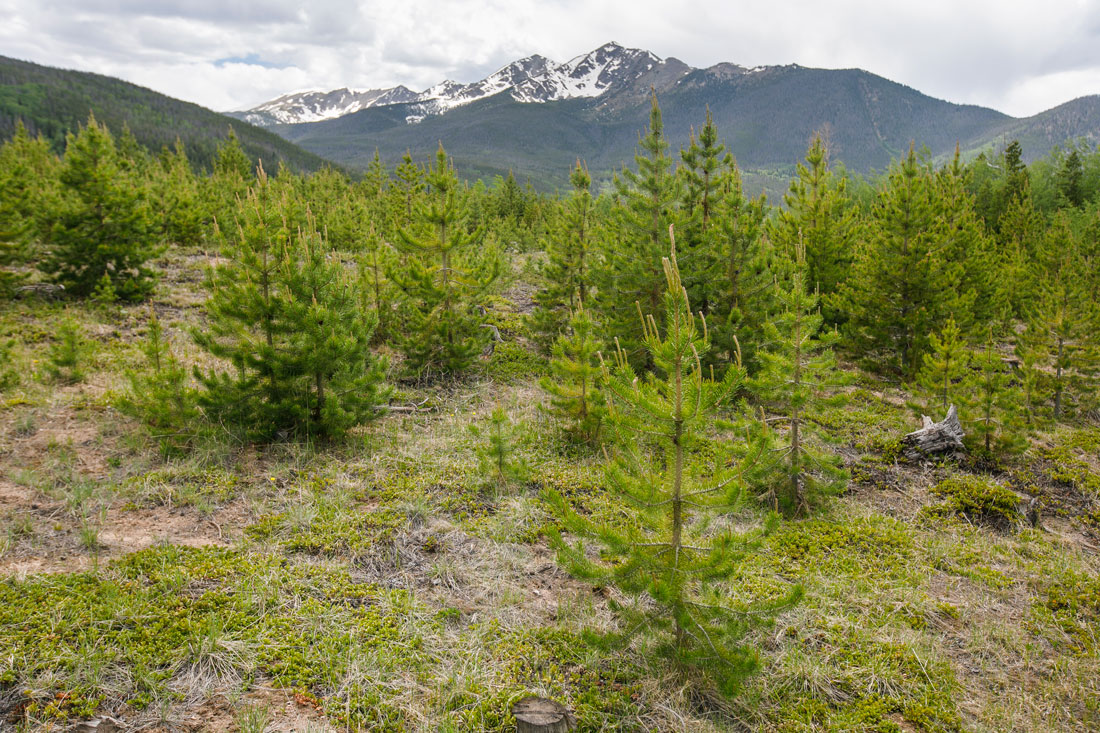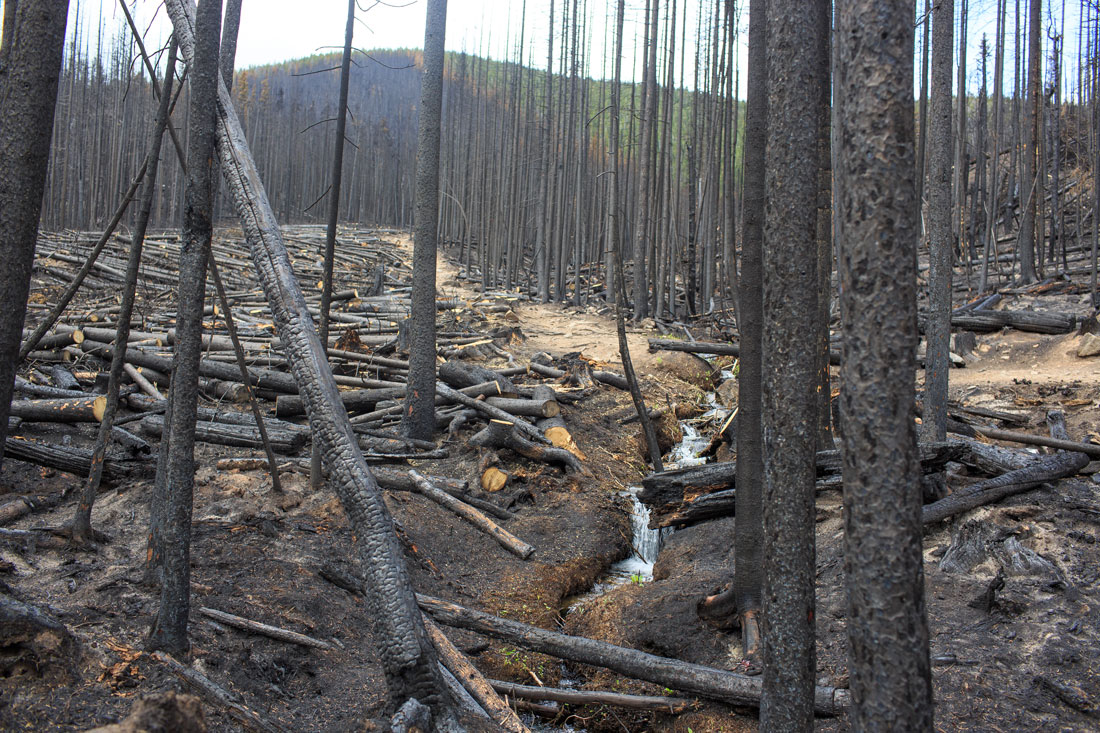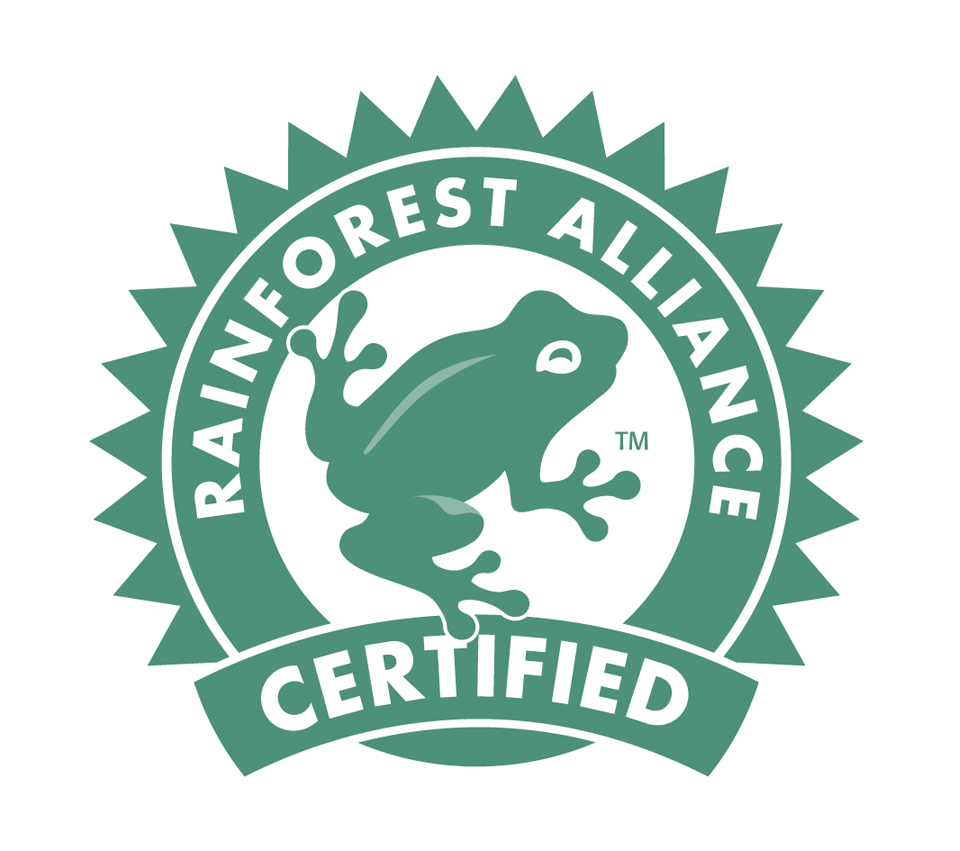
Dear Eartha, How can I stay up-to-date on our local fire restrictions and be more proactive in the health of our forests? – John, Silverthorne
John, there is so much you can do – thank you for your timely question! It’s been hot and dry in Summit County the last few weeks which means we need to be even more attuned to the needs of our forest. The White River National Forest surrounds our Summit County communities encompassing 2.3 million acres, eight wilderness areas, and 10 mountain peaks over 14,000 ft. It’s no wonder the White River is the most visited national forest in the country according to the National Forest Service. And we all have an important role to care for it.
Our forests provide incredible services, from carbon storage, nutrient cycling, and wildlife habitat, to air and water purification…not to mention photosynthesis! When a wildfire knocks at our doorsteps, like the one last summer on Buffalo Mountain, we are reminded just how precious and critical our forests are to the health of our natural environment as well as to our local social, cultural, and economic core.
Here are several things you can do right now.
 Be informed
Staying up to date with the latest news and alerts regarding forest health takes little effort and is foundational to making a positive impact. Last week Stage 1 Fire Restrictions were enacted by the Board of County Commissioners and the Dillon Ranger District. Restrictions are streamlined across local municipalities so become familiar with what the different levels mean for your outdoor exploring. You can find this information on the Summit County Wildfire Prevention page.
The Forest Service’s White River National Forest webpage offers their own alerts and notifications which you can follow on social media or subscribe to.
Go a step further by getting involved with local and national organizations focused on forest health and land use policy. In Summit County, the volunteer Forest Health Task Force collaborates with the Dillon Ranger District on forest health initiatives.
Get engaged in the process
Did you know there is a law that gives you a voice on what happens to our public forest land? The National Environmental Policy Act, NEPA, was put in place in the 1970s and requires federal agencies to make the public aware of projects or changes that could potentially impact the environment. NEPA gives you the opportunity to weigh in on the process in the form of comment periods or public meetings.
Just this summer, the USDA Forest Service proposed changes to NEPA which could greatly affect the public comment process by classifying some projects unnecessary for public opinion. Proposals like this one, if approved, have a significant impact on recreation and outdoor spaces we all enjoy. So, take a moment to call our national representatives and let them know that you’d like a say in what goes on in your backyard.
Be informed
Staying up to date with the latest news and alerts regarding forest health takes little effort and is foundational to making a positive impact. Last week Stage 1 Fire Restrictions were enacted by the Board of County Commissioners and the Dillon Ranger District. Restrictions are streamlined across local municipalities so become familiar with what the different levels mean for your outdoor exploring. You can find this information on the Summit County Wildfire Prevention page.
The Forest Service’s White River National Forest webpage offers their own alerts and notifications which you can follow on social media or subscribe to.
Go a step further by getting involved with local and national organizations focused on forest health and land use policy. In Summit County, the volunteer Forest Health Task Force collaborates with the Dillon Ranger District on forest health initiatives.
Get engaged in the process
Did you know there is a law that gives you a voice on what happens to our public forest land? The National Environmental Policy Act, NEPA, was put in place in the 1970s and requires federal agencies to make the public aware of projects or changes that could potentially impact the environment. NEPA gives you the opportunity to weigh in on the process in the form of comment periods or public meetings.
Just this summer, the USDA Forest Service proposed changes to NEPA which could greatly affect the public comment process by classifying some projects unnecessary for public opinion. Proposals like this one, if approved, have a significant impact on recreation and outdoor spaces we all enjoy. So, take a moment to call our national representatives and let them know that you’d like a say in what goes on in your backyard.
 Be the change
As you become informed you may realize your daily choices have an impact on forests both near and far. Feeling awful about the fires in the Amazon? Me, too. Fight deforestation by reducing your consumption of meat, paper, and wood products. Global demand for beef is fueling deforestation in Brazil where forests are cleared for ranchland and to grow cattle feed. Just one person not eating beef for a year saves 3,432 trees. When shopping, seek out sustainable products that carry the Rainforest Alliance label which indicates the item has met high criteria for social, environmental, and economic sustainability.
Don’t be shy
It’s just as important that you don’t keep knowledge and action to yourself. Share local forest alerts and best practices with your family, neighbors, and adventure partners so they, too, can do their part in protecting our forests.
As the world watches in dismay as the Amazon burns, the benefits of a healthy, thriving forest cannot be overstated. John, being proactive on forest protection may seem like another thing to add to your ‘to do’ list but getting started is easy. Keep in mind, your participation in the health of forests is critical to not only the long-term health and well-being of our environment but, also to your own. So go hug a tree, and then get to work.
Be the change
As you become informed you may realize your daily choices have an impact on forests both near and far. Feeling awful about the fires in the Amazon? Me, too. Fight deforestation by reducing your consumption of meat, paper, and wood products. Global demand for beef is fueling deforestation in Brazil where forests are cleared for ranchland and to grow cattle feed. Just one person not eating beef for a year saves 3,432 trees. When shopping, seek out sustainable products that carry the Rainforest Alliance label which indicates the item has met high criteria for social, environmental, and economic sustainability.
Don’t be shy
It’s just as important that you don’t keep knowledge and action to yourself. Share local forest alerts and best practices with your family, neighbors, and adventure partners so they, too, can do their part in protecting our forests.
As the world watches in dismay as the Amazon burns, the benefits of a healthy, thriving forest cannot be overstated. John, being proactive on forest protection may seem like another thing to add to your ‘to do’ list but getting started is easy. Keep in mind, your participation in the health of forests is critical to not only the long-term health and well-being of our environment but, also to your own. So go hug a tree, and then get to work.
 Be informed
Staying up to date with the latest news and alerts regarding forest health takes little effort and is foundational to making a positive impact. Last week Stage 1 Fire Restrictions were enacted by the Board of County Commissioners and the Dillon Ranger District. Restrictions are streamlined across local municipalities so become familiar with what the different levels mean for your outdoor exploring. You can find this information on the Summit County Wildfire Prevention page.
The Forest Service’s White River National Forest webpage offers their own alerts and notifications which you can follow on social media or subscribe to.
Go a step further by getting involved with local and national organizations focused on forest health and land use policy. In Summit County, the volunteer Forest Health Task Force collaborates with the Dillon Ranger District on forest health initiatives.
Get engaged in the process
Did you know there is a law that gives you a voice on what happens to our public forest land? The National Environmental Policy Act, NEPA, was put in place in the 1970s and requires federal agencies to make the public aware of projects or changes that could potentially impact the environment. NEPA gives you the opportunity to weigh in on the process in the form of comment periods or public meetings.
Just this summer, the USDA Forest Service proposed changes to NEPA which could greatly affect the public comment process by classifying some projects unnecessary for public opinion. Proposals like this one, if approved, have a significant impact on recreation and outdoor spaces we all enjoy. So, take a moment to call our national representatives and let them know that you’d like a say in what goes on in your backyard.
Be informed
Staying up to date with the latest news and alerts regarding forest health takes little effort and is foundational to making a positive impact. Last week Stage 1 Fire Restrictions were enacted by the Board of County Commissioners and the Dillon Ranger District. Restrictions are streamlined across local municipalities so become familiar with what the different levels mean for your outdoor exploring. You can find this information on the Summit County Wildfire Prevention page.
The Forest Service’s White River National Forest webpage offers their own alerts and notifications which you can follow on social media or subscribe to.
Go a step further by getting involved with local and national organizations focused on forest health and land use policy. In Summit County, the volunteer Forest Health Task Force collaborates with the Dillon Ranger District on forest health initiatives.
Get engaged in the process
Did you know there is a law that gives you a voice on what happens to our public forest land? The National Environmental Policy Act, NEPA, was put in place in the 1970s and requires federal agencies to make the public aware of projects or changes that could potentially impact the environment. NEPA gives you the opportunity to weigh in on the process in the form of comment periods or public meetings.
Just this summer, the USDA Forest Service proposed changes to NEPA which could greatly affect the public comment process by classifying some projects unnecessary for public opinion. Proposals like this one, if approved, have a significant impact on recreation and outdoor spaces we all enjoy. So, take a moment to call our national representatives and let them know that you’d like a say in what goes on in your backyard.
 Be the change
As you become informed you may realize your daily choices have an impact on forests both near and far. Feeling awful about the fires in the Amazon? Me, too. Fight deforestation by reducing your consumption of meat, paper, and wood products. Global demand for beef is fueling deforestation in Brazil where forests are cleared for ranchland and to grow cattle feed. Just one person not eating beef for a year saves 3,432 trees. When shopping, seek out sustainable products that carry the Rainforest Alliance label which indicates the item has met high criteria for social, environmental, and economic sustainability.
Don’t be shy
It’s just as important that you don’t keep knowledge and action to yourself. Share local forest alerts and best practices with your family, neighbors, and adventure partners so they, too, can do their part in protecting our forests.
As the world watches in dismay as the Amazon burns, the benefits of a healthy, thriving forest cannot be overstated. John, being proactive on forest protection may seem like another thing to add to your ‘to do’ list but getting started is easy. Keep in mind, your participation in the health of forests is critical to not only the long-term health and well-being of our environment but, also to your own. So go hug a tree, and then get to work.
Be the change
As you become informed you may realize your daily choices have an impact on forests both near and far. Feeling awful about the fires in the Amazon? Me, too. Fight deforestation by reducing your consumption of meat, paper, and wood products. Global demand for beef is fueling deforestation in Brazil where forests are cleared for ranchland and to grow cattle feed. Just one person not eating beef for a year saves 3,432 trees. When shopping, seek out sustainable products that carry the Rainforest Alliance label which indicates the item has met high criteria for social, environmental, and economic sustainability.
Don’t be shy
It’s just as important that you don’t keep knowledge and action to yourself. Share local forest alerts and best practices with your family, neighbors, and adventure partners so they, too, can do their part in protecting our forests.
As the world watches in dismay as the Amazon burns, the benefits of a healthy, thriving forest cannot be overstated. John, being proactive on forest protection may seem like another thing to add to your ‘to do’ list but getting started is easy. Keep in mind, your participation in the health of forests is critical to not only the long-term health and well-being of our environment but, also to your own. So go hug a tree, and then get to work.
